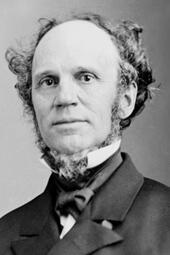Horatio Seymour

Horatio Seymour, the son of a banker, was born in Pompey Hill, New York, on 31st May, 1810. Trained as a lawyer, he served as military secretary to the New York governor, William M. Marcy from 1833 to 1839.
In 1841 Seymour was elected to the lower house of the New York Legislature (1842-46). Her served as Speaker (1845-47) and in 1852 was elected as governor of New York but was defeated two years later, mainly because of his refusal to support prohibition.
On the outbreak of the American Civil War Seymour initially supported Abraham Lincoln but urged a peaceful settlement of the conflict. When he criticised Lincoln's excessive use of executive power, he was accused of being sympathetic to the Southern cause.
In 1868 Seymour was nominated as the Democratic candidate to run against Ulysses S. Grant. In his campaign Seymour advocated a policy of conservative, limited government, and he opposed the Reconstruction policies of the Republicans in Congress. Seymour's campaign was also marked by pronounced appeals to racism with repeated attempts to brand General Grant as the "Black Man's candidate and Seymour as the "White Man's" candidate.
During the campaign, Thomas Nast, produced several cartoons for Harper's Weekly attacking his campaign. One of these drawings shows Seymour joining hands with the Irish vote and the Confederate vote to prevent the Negro from reaching the ballot box. Though Seymour ran fairly close to Grant in the popular vote (lost by 300,000 votes), he was defeated decisively in the electoral vote by a count of 214 to 80.

Seymour returned to New York politics and with Samuel Tilden helped to remove the city's corrupt mayor, Robert Tweed.
Horatio Seymour died on 12th February, 1886.

